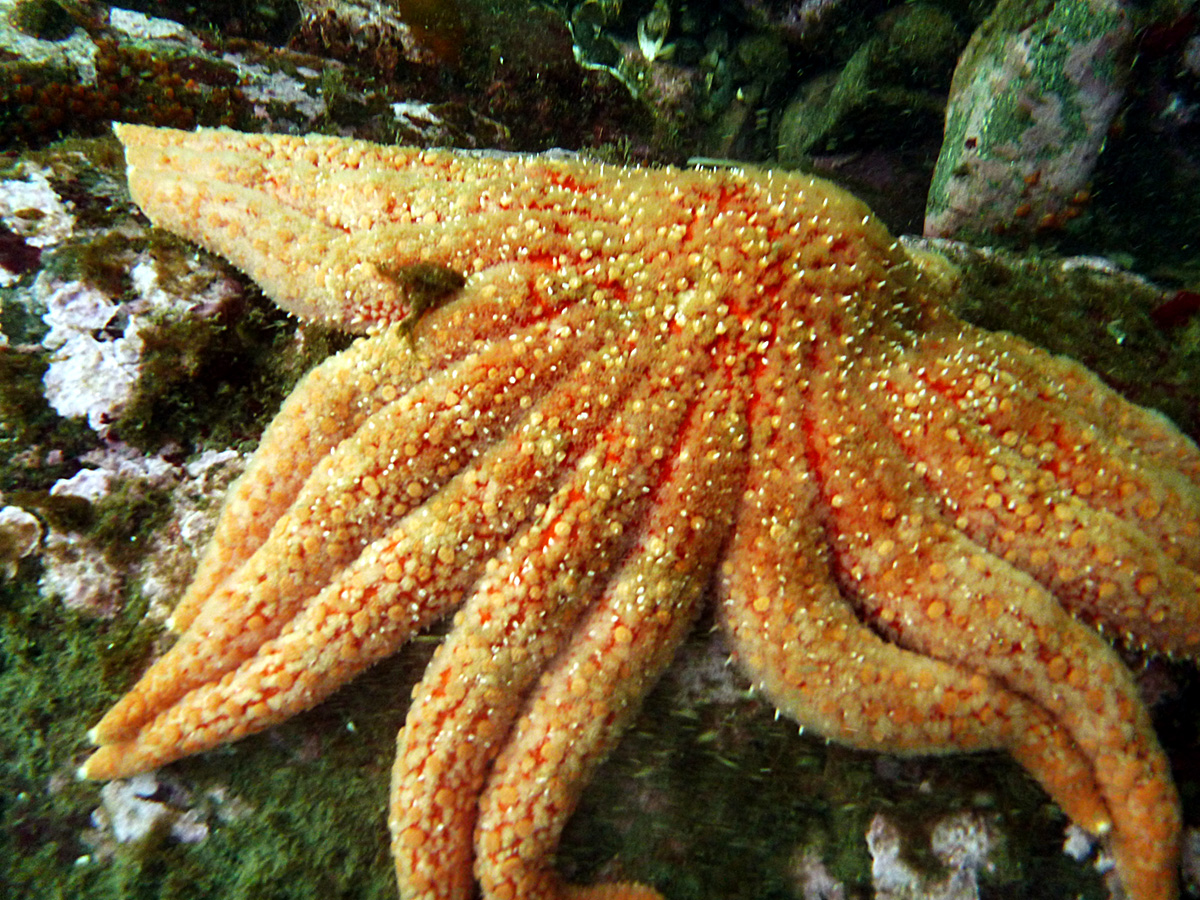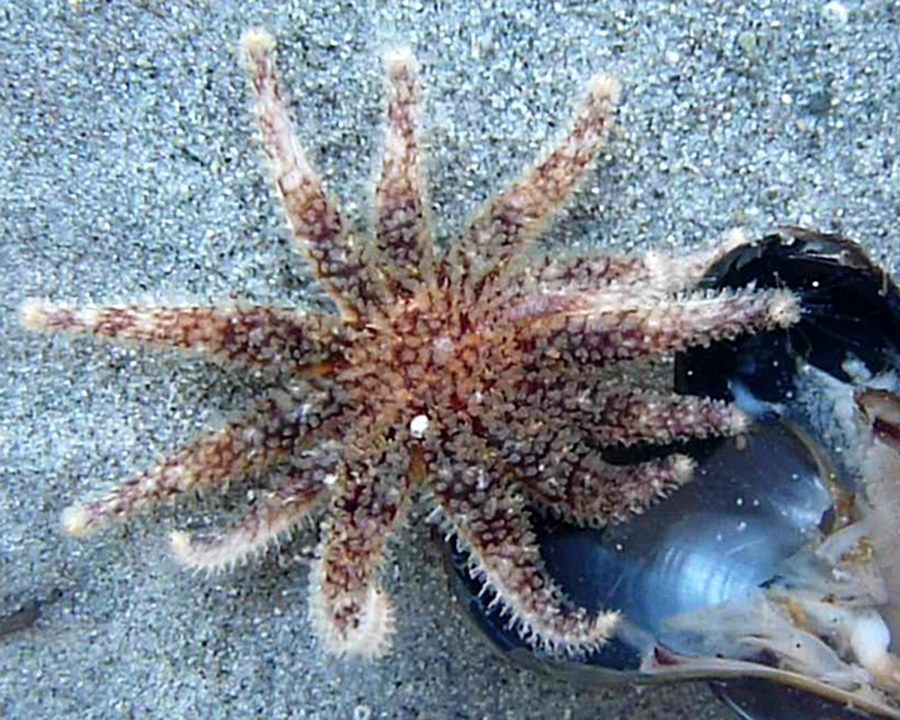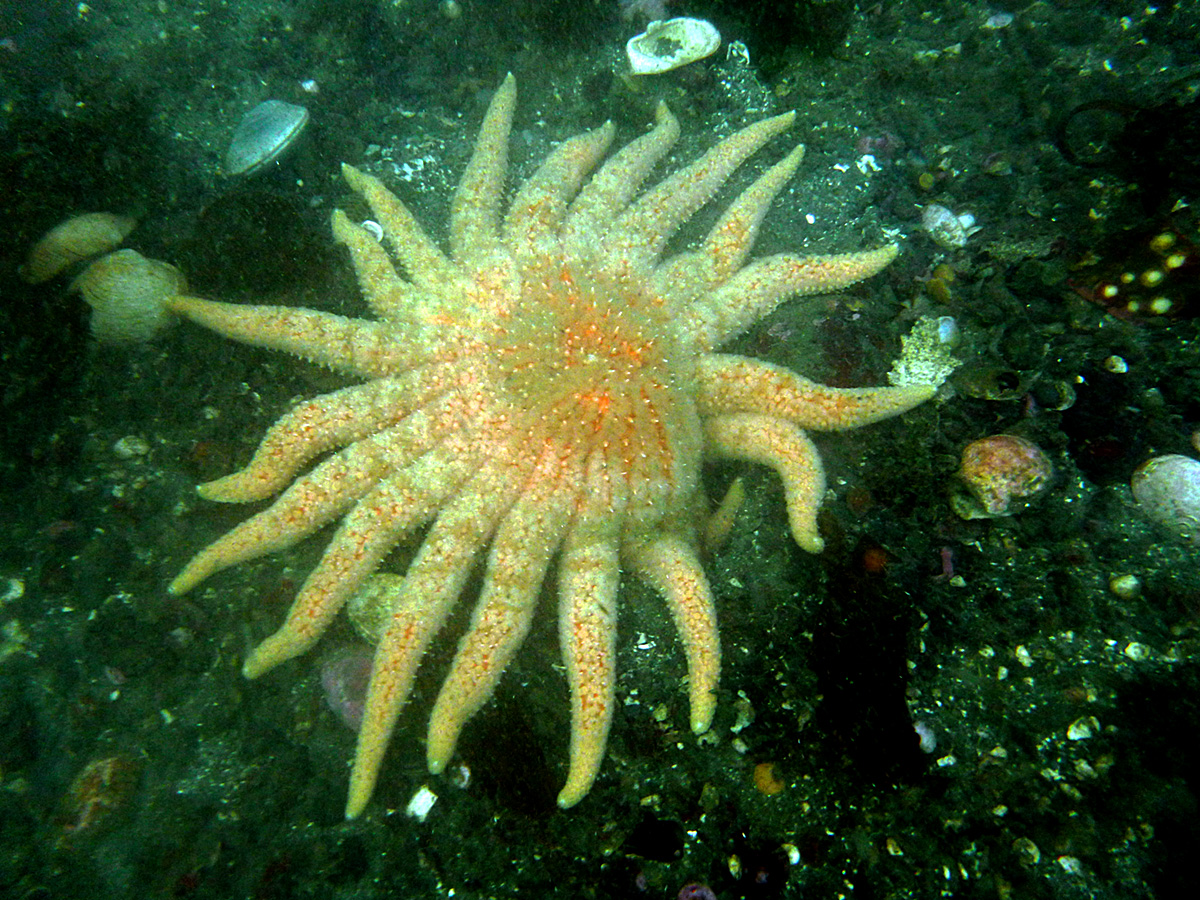Author: Allie Graff
Size range: Generally 1 m (about 39 inches) across but sometimes larger.
Identifying Features: The Sunflower Star is the largest sea star in the world, and is also known as one of the fastest. Its speedy movements are courtesy of the fast-moving tube feet located underneath the sea star’s arms. It can have up to twenty or more arms. The Sunflower Star is usually yellow to bright orange but can also be brown, pink, red or purple in colour.
Habitat: Sunflower Stars are found from intertidal zones to as deep as 437 meters. It’s also not an uncommon sight to see them at low tide on rocky shores, clinging to piers with other sea stars, or coming up with crab or prawn traps.
Prey: Sunflower Stars are very voracious eaters. Given their size, they have to eat substantial amounts of food. And thanks to their flexible skeleton, they can eat almost anything. Sunflower Stars provoke many interesting escape reactions from their prey; sea cucumbers wrestle the star to get away, swimming scallops flap their shells together to flee, and Nuttall Cockles use their foot to vault away from the predator.

A large Sunflower Star (Pycnopodia helianthoides) at Race Rock, British Columbia
This video was made years ago but it shows the surprising speed of a juvenille Sunflower Star
Predators: There are only a few animals that prey on Sunflower Stars; the Alaskan King crab (Paralithodes camschaticus) , sea otters (Enhydra lutris) and gulls (Laridae spp.).
Sea Star Wasting Disease: A major decline in this species has resulted due to the Sea Star Wasting Disease (SSWD). Some populations in British Columbia during 2013 decreased by 99 to 100%. The species is now critically endangered and work is being done to continue to monitor its population with hopes it will recover. It is a very important species in the ecosystem since they keep sea urchins (particularly the Green Sea Urchin, Strongylocentrotus droebachiensis) down. The urchins eat kelp forests which are vital habitats for many species. When the Sunflower Star numbers were decimated the Green Sea Urchin populations exploded in some areas which caused huge losses of kelp forests.
Life Cycle: Once fertilized, Sunflower Star eggs turn into bilateral swimming larvae, which remain among the plankton for no more than 10 weeks. When they metamorphose on the sea floor, they resemble 5-armed sea stars. Additional arms are added during the course of the juvenile sea star’s life. They have external fertilization and two sexes.

A juvenile Sunflower Star – approximately 3.8cm (1.5inches) across
Video by Allie Graff
Photos by David Young
References:
Alender, C., J. Anderson, J. Binyon, R. Boolootian, D. Davenport.( 1966) Physiology of Echinodermata. New York: Interscience. Retrieved May 28th, 2013, fromhttp://eol.org/pages/598461/details#life_cycle
Kolzoff, E. (1993) Seashore life of the northern Pacific coast: An illustrated guide to Northern California, Oregon, Washington, and British Columbia. Seattle, Washington: University of Washington Press
McDaniel, N. (2011) A field guide to sea stars of the Pacific Northwest. Vancouver, British Columbia: harbor Publishing
Sept, J. D. (2019). The Beachcomber’s Guide to Seashore Life in the Pacific Northwest. Harbour Publishing Company Limited.
Schulz, N. (2021, October 14). Decimation of Sea Star Species Leads to Howe Sound Urchin Barrens. Ocean Wise. Retrieved August 15, 2024, from https://ocean.org/blog/decimation-of-sea-star-species-leads-to-howe-sound-urchin-barrens/

